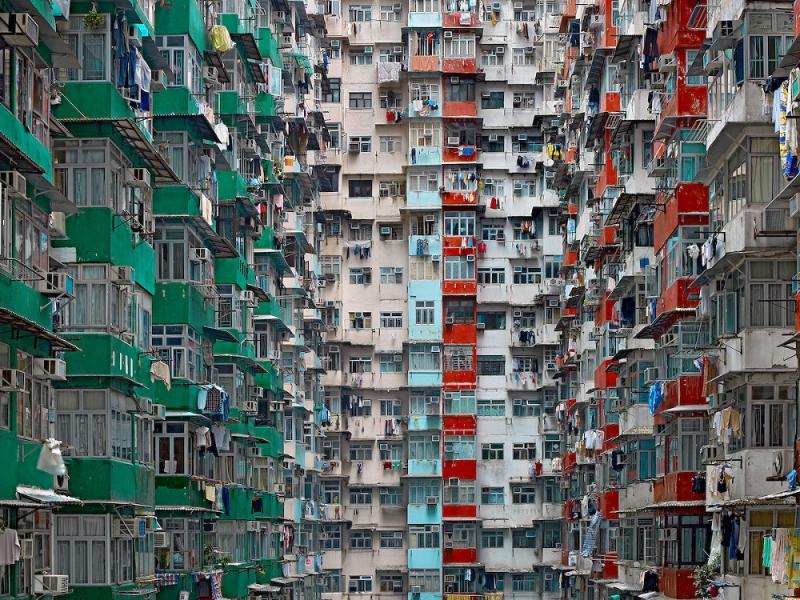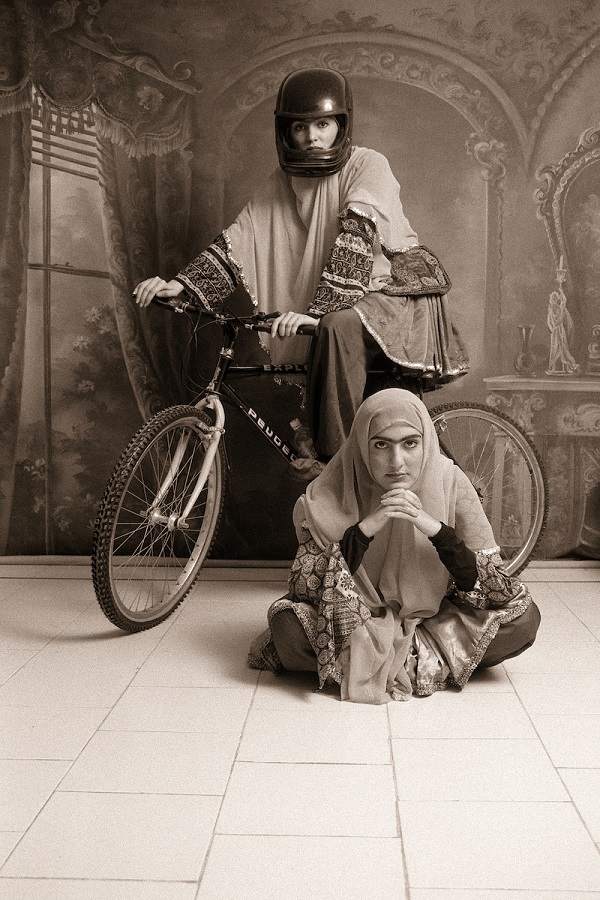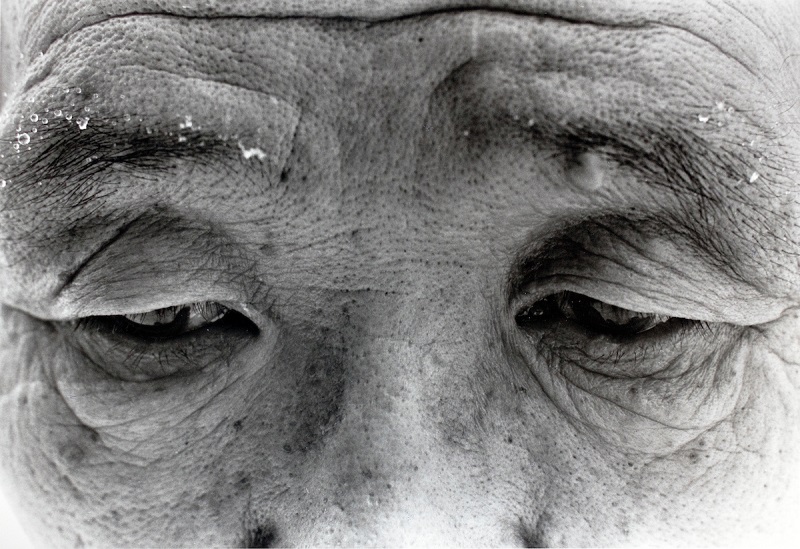theartsdesk at Les Rencontres d'Arles: breadth and depth at the veteran photo festival | reviews, news & interviews
theartsdesk at Les Rencontres d'Arles: breadth and depth at the veteran photo festival
theartsdesk at Les Rencontres d'Arles: breadth and depth at the veteran photo festival
The world in focus at inspirational annual photography event

Now in its 48th year the veteran photography festival is in better shape than ever. You can walk through the French sunshine to more than 20 exhibitions, hear a talk, meet the snappers and shop on the fringe.
Their images give an unmediated view of their lives and troubles - Colombian women staring down the camera "like men"; sad pictures of remembrance from Iran (pictured right: Shadi Ghadirian, Qajar, 1998). Some pictures are truly shocking. Here, for example, are Iranian men and women photographing an execution on their mobile phones. And from other far-off countries there are wonderful images from Chile by Paz Erràzuriz showing the undocumented people of a repressed society, Marie Bovo’s snaps through the doors of the Polish and Russian railways and a major exhibition of Latin American photography.
 Michael Wolf’s Life in the Cities was the highpoint for me, in every sense. The camera zooms in from huge, beautifully detailed images of tower blocks in Hong Kong and Chicago to invade the privacy of those who live and work there (main picture). The show charts Wolf’s development from his early intimate images of life in a small German coalmining town to the alienation of the modern city - a journey in which the viewer progresses from involvement to surveillance and which ends, logically enough, with Google Street View. Some truly beautiful images of the rooftops of Paris are thrown in along the way, together with a huge installation of toys "made in China" surrounding images of the workers who made them.
Michael Wolf’s Life in the Cities was the highpoint for me, in every sense. The camera zooms in from huge, beautifully detailed images of tower blocks in Hong Kong and Chicago to invade the privacy of those who live and work there (main picture). The show charts Wolf’s development from his early intimate images of life in a small German coalmining town to the alienation of the modern city - a journey in which the viewer progresses from involvement to surveillance and which ends, logically enough, with Google Street View. Some truly beautiful images of the rooftops of Paris are thrown in along the way, together with a huge installation of toys "made in China" surrounding images of the workers who made them.
Henri Cartier-Bresson said that your first 10,000 photographs are your worst. Annie Leibovitz shows us 3,000 of hers – reportage from the Seventies and Eighties. Here are black and white 35mm shots of the Rolling Stones and the Beatles and Nixon, McGovern, Carter and Kissinger. The iconic images leap from the walls – Jagger in the lift in a bathrobe, Schwarzenegger’s bum – but mostly this is photojournalism and the interest lies in the events the pictures show. This was the long road to the high-grade commercial images of today’s Vanity Fair, but maybe the mid-point was the time to celebrate. When Leibovitz took up portraiture in the Eighties she produced some famous pictures: Meryl Streep pulling at her face, Whoopi Goldberg in a bath of milk and, of course, John Lennon naked on the bed with Yoko Ono shortly before he was shot. It is a pleasure, and something of a relief, to see them.
Another American, Joel Meyerowitz, shows some of his early street photography; acutely observed, mostly rather grim images – do we really live like that? From Japanese photographer Masahisa Fukase come early selfies (pictured below: Masahisa Fukase, Memories of Father), an obsession with ravens and an important series of images made in collaboration with his cat. In addition there are some profoundly moving family photographs featuring his ageing father and his nude wife. And so much more. A polemic against Monsanto, a 90-foot-long lightbox showing linked landscapes by Peter Fischli and David Weiss; gay men from Switzerland and Levittown from France, and so on. And it's not all one way. If you look too closely at some portraits you get snapped by a smartphone mounted above and, as happened to your reviewer, asked to sign a model release in French.
And so much more. A polemic against Monsanto, a 90-foot-long lightbox showing linked landscapes by Peter Fischli and David Weiss; gay men from Switzerland and Levittown from France, and so on. And it's not all one way. If you look too closely at some portraits you get snapped by a smartphone mounted above and, as happened to your reviewer, asked to sign a model release in French.
If you think you know what photography is and what the camera can do, a trip to Arles might convince you that you are wrong. The breadth and depth of this well-organised festival is an inspiration for photographers and curators everywhere. In the queue for my canteen lunch I met a woman from Ukraine who is organising a photographic festival there. Perhaps I can report to you next year from Odessa.
rating
Explore topics
Share this article
Subscribe to theartsdesk.com
Thank you for continuing to read our work on theartsdesk.com. For unlimited access to every article in its entirety, including our archive of more than 15,000 pieces, we're asking for £5 per month or £40 per year. We feel it's a very good deal, and hope you do too.
To take a subscription now simply click here.
And if you're looking for that extra gift for a friend or family member, why not treat them to a theartsdesk.com gift subscription?
more Visual arts
 Brancusi, Pompidou Centre, Paris review - a sculptor's spiritual quest for form and essence
The Paris landmark signs off with a historic survey
Brancusi, Pompidou Centre, Paris review - a sculptor's spiritual quest for form and essence
The Paris landmark signs off with a historic survey
 Expressionists: Kandinsky, Münter and the Blue Rider, Tate Modern review - a missed opportunity
Wonderful paintings, but only half the story
Expressionists: Kandinsky, Münter and the Blue Rider, Tate Modern review - a missed opportunity
Wonderful paintings, but only half the story
 Eye to Eye: Homage to Ernst Scheidegger, MASI Lugano review - era-defining artist portraits
One of Switzerland's greatest photographers celebrated with a major retrospective
Eye to Eye: Homage to Ernst Scheidegger, MASI Lugano review - era-defining artist portraits
One of Switzerland's greatest photographers celebrated with a major retrospective
 Stephen review - a breathtakingly good first feature by a multi-media artist
Melanie Manchot's debut is strikingly intelligent and compelling
Stephen review - a breathtakingly good first feature by a multi-media artist
Melanie Manchot's debut is strikingly intelligent and compelling
 Fantastic Machine review - photography's story from one camera to 45 billion
Love it or hate it, the photographic image has ensnared us all
Fantastic Machine review - photography's story from one camera to 45 billion
Love it or hate it, the photographic image has ensnared us all
 Yinka Shonibare: Suspended States, Serpentine Gallery review - pure delight
Weighty subject matter treated with the lightest of touch
Yinka Shonibare: Suspended States, Serpentine Gallery review - pure delight
Weighty subject matter treated with the lightest of touch
 Jane Harris: Ellipse, Frac Nouvelle-Aquitaine MÉCA, Bordeaux review - ovals to the fore
Persistence and conviction in the works of the late English painter
Jane Harris: Ellipse, Frac Nouvelle-Aquitaine MÉCA, Bordeaux review - ovals to the fore
Persistence and conviction in the works of the late English painter
 Sargent and Fashion, Tate Britain review - portraiture as a performance
London’s elite posing dressed up to the nines
Sargent and Fashion, Tate Britain review - portraiture as a performance
London’s elite posing dressed up to the nines
 Zineb Sedira: Dreams Have No Titles, Whitechapel Gallery review - a disorientating mix of fact and fiction
An exhibition that begs the question 'What and where is home?'
Zineb Sedira: Dreams Have No Titles, Whitechapel Gallery review - a disorientating mix of fact and fiction
An exhibition that begs the question 'What and where is home?'
 Yoko Ono: Music of the Mind, Tate Modern review - a fitting celebration of the early years
Acknowledgement as a major avant garde artist comes at 90
Yoko Ono: Music of the Mind, Tate Modern review - a fitting celebration of the early years
Acknowledgement as a major avant garde artist comes at 90
 Unravel: The Power and Politics of Textiles in Art, Barbican review - the fabric of dissent
An ambitious exploration of a neglected medium
Unravel: The Power and Politics of Textiles in Art, Barbican review - the fabric of dissent
An ambitious exploration of a neglected medium
 When Forms Come Alive, Hayward Gallery review - how to reduce good art to family fun
Seriously good sculptures presented as little more than playthings or jokes
When Forms Come Alive, Hayward Gallery review - how to reduce good art to family fun
Seriously good sculptures presented as little more than playthings or jokes

Add comment